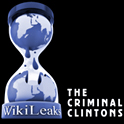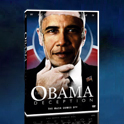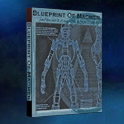welcome
|
||
"...And they really have no earthly idea what this vaccine will do. They have no idea of the long term consequences. If you vaccinated everybody in the United States by force and five years later you find out large numbers of them are going to have MS, large numbers are going to develop transverse myelopathy, auto immune diseases, you could cripple this nation. And people would not be able to work. Their lives would be ruined forever. So this is something that is of such enormous consequences, we must absolutely stop any idea of a mandatory vaccination program." - Dr. Russell Blaylock, MD - The Great American Mask Rip Off | Technocracy News & Trends | Oct 7, 2020 - RESIST THE TECHNOCRATIC TAKEOVER - **Please Give Page Time To Load**
The Eugenicist Mindset The Last American Vagabond | November 30th, 2020 Welcome to The Daily Wrap Up, a concise show dedicated to bringing you the most All Video Source Links Can Be Found Here At The Last American Vagabond: Want to send a check to support TLAV, or just words of encouragement? Tuskegee Syphilis Experiment The Deadly Deception - 1993 Rare Documentary
By Jeremy Loffredo and Whitney Webb | November 25, 2020
With the first COVID-19 vaccine candidate set to receive an Emergency Use Authorization (EUA) from the US government in a matter of days, its distribution and allocation is set to begin “ within 24 hours” of that vaccine’s imminent approval. The allocation strategy of COVID-19 vaccines within the US is set to dramatically differ from previous national vaccination programs. One key difference is that the vaccine effort itself, known as Operation Warp Speed, is being almost completely managed by the US military, along with the Department of Homeland Security (DHS) and the National Security Agency (NSA), as opposed to civilian health agencies, which are significantly less involved than previous national vaccination efforts and have even been barred from attending some Warp Speed meetings. In addition, for the first time since 2001, law enforcement officers and DHS officials are set to not be prioritized for early vaccination. Another key difference is the plan to utilize a phased approach that targets “populations of focus” identified in advance by different government organizations, including the CDC’s Advisory Committee on Immunization Practices (ACIP). Characteristics of those “populations of focus,” also referred to as “critical populations” in official documentation, will then be identified by the secretive, Palantir-developed software tool known as “Tiberius” to guide Operation Warp Speed’s vaccine distribution efforts. Tiberius will provide Palantir access to sensitive health and demographic data of Americans, which the company will use to “help identify high-priority populations at highest risk of infection.” This report is the first of a three-part series unmasking the racist components of the Pentagon-run project to both develop and distribute a COVID-19 vaccine. It explores the COVID-19 vaccine allocation strategy first outlined by the Johns Hopkins Center for Health Security and subsequent government allocation strategies that were informed by Johns Hopkins. The main focus of this allocation strategy is to deliver vaccines first to racial minorities but in such a way as to make those minorities feel “at ease” and not like “guinea pigs” when receiving an experimental vaccine that those documents admit is likely cause “certain adverse effects…more frequently in certain population subgroups.” Research has shown that those “subgroups” most at risk for adverse effects are these same minorities. The documents also acknowledge that information warfare and economic coercion will likely be necessary to combat “vaccine hesitancy” among these minority groups. It even frames this clearly disproportionate focus on racial minorities as related to national concerns over “police brutality,” claiming that giving minorities the experimental vaccine first is necessary to combat “structural racism” and ensure “fairness and justice” in the healthcare system and society at large. Part 2 of this series will discuss how Palantir, a company currently helping DHS and law enforcement violently target African Americans and Latinos, will be in charge of allocating “tailored” COVID-19 vaccines to those same minorities as well as Palantir’s origins and its executives’ views on race. Part 3 will explore the direct ties between a COVID-19 vaccine front-runner and the Eugenics Society, which was re-named the Galton Institute in 1989.
The Planners
The Trump administration been criticized for its rush to develop and deploy a COVID-19 vaccine and particularly for installing Monclef Slaoui, a former pharmaceutical executive with ongoing conflicts of interest, as chief scientific adviser for Operation Warp Speed, the Pentagon-run program to produce and distribute the vaccine. Yet, if and when a Biden administration takes power, Operation Warp Speed is set to proceed with little, if any, modification. The Johns Hopkins Center for Health Security (CHS) director Tom Inglesby, who will serve on the Biden Health and Human Services (HHS) transition team, has praised Slaoui, telling Stat News that the longer someone like him can remain in charge of the nation’s COVID-19 vaccine effort, “the better it is for the country.” Inglesby, who led discussions at the CHS’s Event 201 exercise in October 2019 and who was one of the primary authors of the controversial Johns Hopkins Dark Winter exercise in 2001, is emblematic of the US government’s and the mainstream media’s general reliance on the Johns Hopkins Bloomberg School of Public Health (of which CHS is part) for pandemic-related matters. Slaoui regularly appears on network TV as a COVID-19 oracle and has been called “one of the nation’s go-to experts on the spread of the coronavirus.” Readers may note that the Johns Hopkins “coronavirus tracker” has been used by virtually every mainstream news source since the beginning of COVID-19 reporting. This relationship is expected to continue, if not intensify, in a Biden administration. Both Kathleen Hicks, the lead on Biden’s Department of Defense (DOD) transition team, and Alexander Bick, on Biden’s National Security Council transition team, are scholars at Johns Hopkins Kissinger Center for Global Affairs, reflecting the university’s broader influence on a future Biden administration. Yet, the most significant way the Biden transition intersects with Johns Hopkins is through the CHS. Originally called the Center for Civilian Biodefense Strategies, the CHS is a think tank within Johns Hopkins that regularly gives recommendations to both the US government and the World Health Organization and, like the Bill and Melinda Gates Foundation, has emerged as a voice of authority on all matters COVID-19 in the US. The center’s founding director was D. A. Henderson, best known for his role in the WHO-sponsored smallpox vaccination campaign. Henderson also held several government positions, including serving as associate director of the Office of Science and Technology Policy under George H. W. Bush. He was also the longtime dean of the Johns Hopkins School of Public Health.
Another member of the Biden transition team is Luciana Borio, a current member of the CHS steering committee. As both a former FDA scientist and former National Security Council member, Borio signifies the relationship between the national security state and the biosecurity state. She’s currently a vice president of In-Q-Tel, the venture-capital arm of the CIA. In-Q-Tel’s current executive vice president, Tara O’Toole, who at the onset of the COVID-19 outbreak declared that “the best way ever to protect those who are well is with vaccines,” is Inglesby’s mentor and predecessor as director of the CHS. She was also a key player and the lead author of the CHS’s Dark Winter and CladeX bioterror simulations. The Engineering Contagion series published by The Last American Vagabond earlier this year explored the Dark Winter simulation in depth, including how the simulation eerily predicted the 2001 anthrax attacks that followed soon after September 11, 2001, with several participants demonstrating apparent foreknowledge of those attacks. Ending racism with vaccines?
The Centers for Disease Control and Prevention (CDC) has consistently referenced materials developed by the CHS in its recent COVID-19 vaccine allocation literature. These CDC-issued materials form the backbone of the various vaccine allocation strategies issued by many state governments. Chief among these is the COVID-19 Vaccination Program Interim Playbook, published at the end of October. A key aspect of that program is the determination of “critical populations for COVID-19 vaccination, including those groups identified to receive the first available doses of COVID-19 vaccine when supply is expected to be limited.” In August, the CHS published its Inglesby cowritten Interim Framework for COVID-19 Vaccine Allocation and Distribution, which is cited by the CDC as a key reference for its nationwide COVID-19 vaccine-allocation strategy. This report will examine this document, in particular, as well as other related documents that reveal that ethnic and racial minorities, specifically those over sixty-five and those who make up part of the “essential” workforce, are set to be the first to receive experimental COVID-19 vaccines. The Interim Framework argues there is a need to prioritize ethnic minorities, particularly African Americans and Latino Americans, in order to reflect “fairness and justice.” It states that “a critical difference” between COVID-19 vaccine allocation and the “context envisioned in the 2018 guidance for pandemic influenza vaccine allocation” is the fact that the US is “currently in the midst of a national reckoning on racial injustice, prompted by cases of police brutality and murder.” It goes on to state that “although structural racism was as present in the 2018 and previous influenza epidemics as it is today, the general public acknowledgment of racial injustice was not.” It goes without saying that police brutality is decidedly unrelated to vaccine allocation as is increased national awareness of racial injustice as it relates to police brutality. This is further compounded by the police, in this document, being removed as a priority group for COVID-19 vaccine allocation, despite having been designated a priority group in all other government vaccine-allocation guidance since the 2001 anthrax attacks. Also odd is that it is only increased access of minorities to the COVID-19 vaccine that is cited as a way to address “structural racism in health systems,” not other policies that would be more likely to address the problem such as Medicare for All. In addition, the Interim Framework admits that “communities of color, particularly Black populations, may be more wary of officials responsible for vaccine-related decisions due to past medical injustices committed by authorities on Black communities.” There is a long list of these “medical injustices” committed against minority communities by the US government, including the infamous Tuskegee syphilis experiments, which are discussed in detail later. Another odd passage on “justice” and “equity” as it relates to vaccinating ethnic minorities first states:
This extreme emphasis on the “fairness and justice” of prioritizing minorities for the vaccine is contradicted by other claims made in the same document. For example, the document also states:
It also notes: “It is also possible that certain adverse effects may occur more frequently in certain population subgroups, which may not be apparent until millions are vaccinated.”
Notably, African Americans are understood to be at a higher risk for adverse reactions to vaccines. According to a study by the University of Pennsylvania, African Americans exhibit a disproportionately higher immune response to certain flu shots. And in 2014, the Mayo Clinic found that African Americans have almost double the immune response to the rubella vaccine as Caucasian Americans. Immune reactions that are too strong can result in more adverse events and inflammatory responses such as transverse myelitis, a debilitating inflammation and paralysis of the spinal cord. A 2010 study in the Journal of Toxicology and Environmental Health showed that African American boys were at significantly greater risk of suffering severe neurological injury from the hepatitis B shot as compared to Caucasians. This raises the question as to whether African Americans should be prioritized for a poorly tested vaccine when the available science shows that this demographic may be at a higher risk for adverse reactions to vaccines. Previous coronavirus vaccine projects triggered immune responses so strong that the test animals died, and the vaccine projects got scrapped. The Johns Hopkins CHS Interim Framework claiming that vaccinating African Americans and other ethnic minorities first represents “fairness and justice” and would address “structural racism” does not square with its admission that the safety of the COVID-19 vaccine is “not completely knowable” until millions have received it and that “certain adverse effects may occur more frequently in certain population subgroups.”
Who is really to blame for “vaccine hesitancy”?
For a successful rollout of a COVID-19 vaccine, the federal government will need to reckon with “vaccine hesitancy,” which the WHO named as one of the top ten threats to global health in 2019 and which is a major concern discussed at length in the August Interim Framework on COVID-19 vaccination strategies. According to recent polls, such hesitancy is, understandably, most prevalent among African Americans, the group that has most commonly been used as human guinea pigs by the US government and associated scientific and medical institutions. For instance, there are the infamous Tuskegee University experiments, devised by the US Public Health Service (now a division of HHS) and the CDC. The unwitting participants in the study, all of whom who were African American, were told that they were receiving free health-care services from the federal government, while actually they were being intentionally untreated for syphilis so government scientists could study the devastating progression of the disease. Deception was critical to the experiment, as the participants did not know they were part of an experiment at all and were also kept unaware of their true diagnosis. While Tuskegee may be the most well-known example of racist medical experimentation in the US, it’s far from the only one. For example, during Manhattan Project, the undertaking that produced the atom bomb, the US government contracted dozens of physicians to inject unknowing hospital patients with up to 4.7 micrograms of radioactive plutonium, forty-one times normal lifetime exposure. The goal of this experiment was to pinpoint the dosage at which radioactive elements such as plutonium would cause illnesses like leukemia, and to measure the amount of radioactivity that lingers in the blood, tissues, bones, and urine. Between 1944 and 1994 the Atomic Energy Commission supported thousands of experimental projects sanctioning such radiation on human subjects, most of whom were African Americans. From 1954 to 1962, the Sloan-Kettering Institute, which receives hundreds of millions of dollars of NIH funds annually, injected over four hundred African American inmates atOhio State Prison with live cancer cells to observe how the body might destroy them. The primary sponsor for this research was the National Institutes of Health, which also partially sponsored the Tuskegee experiments. From 1987 through 1991, US researchers administered as much as five hundred times the approved dosage of the Edmonton-Zagreb (EZ) measles vaccine to African American and Latino babies in low-income Los Angeles neighborhoods as part of a vaccine experiment. Consent forms did not inform parents of the increased dosage or of the fact that the vaccine was experimental. Parents were also not informed that the vaccine had already been given to two thousand children in Haiti, Senegal, and Guinea-Bissau with disastrous results. For example, in Senegal, children who received the jab died at a rate80 percent higher than children who did not receive it. The CDC would later characterize the US trials as “clearly a mistake.” Between 1992 and 1997, Columbia University’s Lowenstein Center for the Study and Prevention of Childhood Disruptive Behavior Disorders conducted studies that sought to establish a link between genetics and violence, focusing on minority children in New York City. These experiments targeted 126 boys between the ages of six and ten, 100 percent of whom were either African American, Latino, or biracial. In exchange for $100 and a $25 Toys “R” Us gift card, the children, selected because their older brothers had come into contact with the juvenile probation system, were taken from their homes, denied food and water, and given a drug called fenfluramine. Prior to these experiments, fenfluramine had never been administered to people under the age of twelve, and it was already known that the drug was associated with heart-valve damage, brain damage, and death. Such historical facts raise obvious questions about the reasons for “vaccine hesitancy” and how they are currently being approached by the US government and related institutions. While it would make the most sense to combat this problem by holding to account the people responsible for past abuses, such as those described above, the opposite has been the case. Instead, the CHS and other institutions, particularly regarding the coming COVID-19 vaccination campaign, have proposed several other means of combatting “vaccine hesitancy,” ranging from deception to information warfare to economic coercion.
A dark legacy poised to continue
Given the long-standing exploitive relationship between US medicine and ethnic minorities, the August Interim Framework addresses the situation that communities of color, and in particular black populations, “may be more wary of officials responsible for vaccine-related decisions due to past medical injustices.” It states: “Anticipate hesitancy among marginalized populations who may be fearful or wary of seeking vaccination at sites that have historically caused mistrust.” Another CHS paper, published in July and titled “ The Public’s Role in COVID-19 Vaccination,” which is cited heavily in the August framework, acknowledged the US “legacy of experimentation on Black men and women.” However, the CHS document also notes that more than one COVID-19 vaccine candidate “may be available at the same time” and they “may have different safety and efficacy profiles across different population groups and may have different logistical requirements.” It adds that “it is also possible that certain adverse effects may occur more frequently in certain population subgroups, which may not be apparent until millions are vaccinated.” It is notable that Palantir, the CIA-linked government technology contractor, has been put in charge of creating the software that will “decide” which “population subgroups” are given what vaccine. Palantir is perhaps best known for its controversial role in targeting undocumented immigrants through its contracts with ICE and its role in predictive-policing efforts that disproportionately targeted African Americans. It is certainly unsettling that those same ethnic groups that Palantir is most controversial for targeting on behalf of the national-security state and law enforcement are the same “critical populations” that the company will initially identify for the US military–led COVID-19 vaccination program, Operation Warp Speed. In addition, in a move that can only aggravate minority community “vaccine hesitancy,” the August CHS Interim Framework recommends that the CDC transform the current “vaccines adverse-event reporting system” from a voluntary system that relies on individuals sending in reports to the government to “an active surveillance system” that “monitors all vaccine recipients,” possibly via unspecified “electronic mechanisms.” The Last American Vagabond reported last month that Operation Warp Speed, seemingly having taken a cue from the Interim Framework, plans to utilize “incredibly precise . . . tracking systems” that will “ensure that patients each get two doses of the same vaccine and to monitor them for adverse health effects.” Those systems will be managed, in part, by the intelligence-linked tech giants Google and Oracle.
The main stated purpose of these “tracking systems,” referred to in other Warp Speed documents as “pharmacovigilance systems,” is to monitor the longer-term effects of new, unlicensed vaccine-production methods that are being used in the production of every Warp Speed COVID-19 vaccine candidate. These vaccines, per Warp Speed’s own documents, state that these methods “have limited previous data on safety in humans . . . the long-term safety of these vaccines will be carefully assessed using pharmacovigilance surveillance and Phase 4 (post-licensure) clinical trials,” following the administration of the COVID-19 vaccines to the prioritized “critical populations.”
A strategy takes shape
Given the above, the unprecedented facets of the Warp Speed COVID-19 vaccination plan—that is, its focus on ethnic minorities as the first to receive the experimental COVID-19 vaccine, its interest in giving different vaccine candidates to “different population groups,” and studying the largely unknown effects through “tracking systems” and unspecified “electronic mechanisms”— are all things that would obviously further fuel mistrust by those ethnic groups that have historically been targets of medical experimentation by the US government. Furthermore, that COVID-19 vaccine development and distribution efforts are being spearheaded by the military and national-security apparatus, as well as having the intimate involvement of controversial contractors such as Palantir, will likely exacerbate minority distrust as Operation Warp Speed advances, given that these same groups are those most often found to be on the receiving end of militarized state violence. Also concerning is that law enforcement, military, and Department of Homeland Security officials will no longer be priority vaccine-allocation targets, for the first time since the 2001 anthrax attacks, while no convincing reason for their exclusion is offered. Yet, instead of honestly addressing these unprecedented recommendations, the effort to get around the “vaccine hesitancy” issue as it relates to minorities plans to rely on tactics that avoid addressing any of these issues directly. In one example, although the August Interim Framework recommends “directly prioritizing” ethnic minorities, it recognizes that doing so “could further threaten the fragile trust that some have in the medical and public health system, particularly if there is the perception that there has been a lack of testing to assess vaccine safety and that they are the ‘guinea pigs.’” The document also states that “the implementation of directly prioritizing communities of color could also be challenging and divisive, as determining how to access specific populations and how to determine eligibility based on race or ethnicity includes many sensitive challenges.” As a workaround for such concerns, the CHS suggests that “prioritizing other cohorts of the population, such as essential workers or those with underlying health conditions associated with poorer COVID-19 outcomes, could also indirectly help address the disproportionate burden of this pandemic on communities of color” due to the high representation of those minorities in the essential workforce. The document continues: “While this approach might avoid some of the challenges outlined above, it would also need to be implemented in a way that ensures vaccines are equitably distributed across subcategories of these categories.” Thus, it suggests prioritizing “those individuals and groups who face both severe health and severe economic risks, specifically essential workers at higher risk of severe illness—or whose household members are at higher risk—who will suffer severe economic harm if they stop working.” Those groups at “higher risk of severe illness,” the document later notes, are incidentally ethnic minorities. In other words, the strategy proposed by the CHS is to specifically prioritize cohorts of the US population that contain high proportions of ethnic minorities without directly prioritizing those minorities in order to, somewhat deceptively, avoid exacerbating “vaccine hesitancy” concerns among those groups by directly singling them out. The Interim Framework acknowledges the high prevalence of ethnic minorities in the essential workforce and cites a paper published in April 2020 by the Center for Economic and Policy Research that notes that “people of color are overrepresented in many occupations with frontline industries.” In addition to prioritizing essential workforce cohorts, which have a high percentage of ethnic minorities, the CHS document also suggests that prisoners, another group where ethnic minorities are heavily overrepresented, and “undocumented immigrant communities of color” should also be prioritized. Like the essential workforce strategy, this would ensure increased vaccine uptake by ethnic minorities without prioritizing them directly. It is also worth noting that, in addition to the focus on ethnic minorities, the Interim Framework also recommends that “differently abled and mentally challenged populations, who can experience difficulties in accessing healthcare and could be in higher-risk living settings, such as assisted living facilities,” be included as a “target population” along with ethnic minorities. This strategy as laid out by the CHS appears to have been embraced by the CDC’s Advisory Committee on Immunization Practices (ACIP), which is the official government body that will designate the “target populations” of the COVID-19 vaccination strategy. Also in August, Kathleen Dooling, a CDC epidemiologist writing on behalf of ACIP’s COVID-19 Vaccines Work Group, stated that “groups for early phase vaccination” should be those that “overlap” the most with, first, those with “high risk” medical conditions, second, essential workers, and, third, adults over sixty-five. As previously noted, the essential workforce is predominantly composed of ethnic minorities. Notably, the “high risk” medical conditions listed in this same document are conditions that are all significantly more prevalent among ethnic minorities, such as type 2 diabetes, obesity, chronic kidney disease, serious heart conditions, and sickle cell disease. Cancer is also listed and, while prevalent across the US population at large, the incidence of cancer is highest among African Americans. Particularly notable is the inclusion of sickle cell disease, as African Americans in the US have a much higher probability of having that condition than any other group. According to 2010 data analyzed by the CDC, the sickle cell gene, which is necessary in both parents for a child to inherit sickle cell disease, is present in 73 per 1,000 African American newborns, compared to 3 per 1,000 Caucasian newborns. The “overlap” strategy fits with current CDC ACIP guidelines for vaccine recommendations, which hold that, if vaccination supply is limited, the CDC should “reduce the extra burden the disease is having on people already facing disparities.” The “overlap” strategy as laid out in the recent ACIP COVID-19 Vaccines Work Group document, however, has the inevitable end result of ensuring that the vast majority of those who will first receive the experimental COVID-19 vaccine will be ethnic minorities over the age of sixty-five and ethnic minorities in the essential workforce. Also noteworthy in relation to the prioritization of ethnic minorities is that in March the government interpreted federal regulations to grant liability immunity to any entity producing, distributing, manufacturing, or administering COVID-19 countermeasures, including vaccines. According to HHS, this move may also “provide immunity from certain liability under civil rights laws,” meaning that those involved with the COVID-19 vaccination campaign may not be liable if found to violate the rights of groups protected under civil rights law, that is, ethnic minorities.
Controlling the narrative
Another tactic promoted by the CHS, as well as the CDC and Warp Speed, to combat “vaccine hesitancy” is aggressive communication strategies that include “saturating” the media landscape with provaccine content while greatly reducing content deemed to promote “vaccine hesitancy.” The national-security state, which is managing Operation Warp Speed, has become increasingly involved in this media effort, particularly by censoring content that is considered to be antivaccine (including, in their view, news outlets critical of the pharmaceutical industry and vaccine manufacturers) by using counterterror tools that have previously been used to disrupt online terrorist propaganda. After the October 2019 coronavirus pandemic simulation, Event 201, the CHS issued a statement that media companies have a responsibility to ensure that “authoritative messages are prioritized.” The CHS had co-sponsored Event 201 alongside the World Economic Forum and the Bill and Melinda Gates Foundation. There is much more to this information war than just the rapidly accelerating online censorship effort. For instance, the official Operation Warp Speed document entitled “From the Factory to the Frontlines” notes that “strategic communications and public messaging are critical to ensure maximum acceptance of vaccines, requiring a saturation of messaging across the national media.” It also states that “working with established partners—especially those that are trusted sources for target audiences—is critical to advancing public understanding of, access to, and acceptance of eventual vaccines” and that “identifying the right messages to promote vaccine confidence, countering misinformation, and targeting outreach to vulnerable and at-risk populations will be necessary to achieve high coverage.” The document also notes that Warp Speed will employ the CDC’s three-pronged strategic framework known as “Vaccinate with Confidence” for its communications thrust. The third pillar of that strategy is called “Stop Myths” and has as a main focus “establish[ing] partnerships to contain the spread of misinformation” as well as “work[ing] with local partners and trusted messengers to improve confidence in vaccines.” Like the official Warp Speed guidance, the CDC Interim Framework also sees “community outreach” as an essential element for a successful vaccine campaign and suggests funding and training community health workers to promote vaccination specifically to “underserved, disproportionately affected groups.” It details how the US government might engage African Americans, Latino Americans, and lower-income populations to build trust in connection with vaccine recommendations and get around “concerns that they are ‘testing subjects’ for a novel vaccine.” The CHS document notes, for example, the importance of cultural competence when promoting vaccines, advising that vaccinating at “churches, schools, culturally specific community centers or senior centers” might sit better with marginalized populations and make them feel more at ease. Such considerations were further elaborated on by Luciana Borio in September. That month, the vice president of In-Q-Tel and member of Biden’s transition team, wrote that while it may be appropriate to use US military resources for vaccination efforts, “any such federal engagement must be done in a collaborative manner sensitive to public perceptions that may be engendered by having a public health function fulfilled by individuals in uniform.” A July CHS paper, “ The Public’s Role in COVID-19 Vaccination,” a document Luciana Borio also helped write, argued, “Vaccination sites should not be heavily policed or send any signals that the site may be unsafe for Black or other minority communities.” This CHS paper further states that “trusted community spokespersons” should be utilized for a “communication campaign,” amplifying “vaccine-affirming, personally relevant messages.” Like similar WHO materials, it advocates tailoring the campaign to specific audiences and identifying a network of spokespeople to deliver a “salient and specific message repeatedly, delivered by multiple trusted messengers and via diverse media channels.”
The CDC also recommends vaccine administration at places such as university parking lots, soup kitchens, public libraries, and faith-based organizations. An October CDC report reads: “For people living in institutions, consider vaccination at intake; for people attending colleges/universities, vaccinate at enrollment.” It also proposes that US states and territories utilize nontraditional vaccination sites such as homeless shelters and food pantries. The prospect of red-carpet celebrities, influencers, and “trusted messengers” endorsing public-health policy is not unthinkable. According to NBC New York, New York and New Jersey have already recruited celebrities to urge residents to follow CDC guidelines. Actors including Julia Roberts, Penelope Cruz, Sarah Jessica Parker, Robin Wright, and Hugh Jackman earlier this year joined a coordinated campaign to “pass the mic to COVID-19 experts.” In addition, this summer the WHO paid PR firm Hill & Knowlton Strategies $135,000 to identify micro-influencers, macro-influencers, and what it calls “hidden heroes” who “shape and guide conversations” to promote WHO messaging on social media and promote the organization’s image as a COVID-19 authority. Hill & Knowlton are controversial for having previously manufactured the false “incubator baby” testimony delivered in front of Congress that propelled the US into the first Gulf War in the early 1990s. “ The Public’s Role in COVID-19 Vaccination” also urges using groups such as faith-based organizations, schools, homeowners’ associations, and unions trusted by “hard-to-reach audiences” to convey positive vaccine messages and to “modulate public perceptions of vaccination.” Accordingly, the July CHS paper notes “the importance of using outside groups who have relationships with the community, instead of direct government involvement.” It should be noted that during the Tuskegee experiments, the US Public Health Service hired Eunice Rivers, a black nurse with a close relationship to the local minority community, to maintain contact with those who were part of the experiment to ensure they continued to participate. This outsourcing framework as laid out by the CHS is reproduced in the federal government’s own literature. An October CDC report entitled Interim Playbook for Jurisdiction Operations describes the importance of engaging what minority populations would consider “trusted sources” such as union representatives, college presidents, athletic coaches, state licensure boards, homeless shelter staff, soup kitchen managers, and faith leaders to “address hesitancy” in relation to the COVID-19 vaccine. Operation Warp Speed’s document “ From the Factory to the Frontlines,” released the same day as the CDC Interim Playbook, gives more specific examples of the government’s ongoing work with organizations “representing minority populations,” stating that faith-based organizations can be critical. “HHS’s Center for Faith and Opportunity Initiatives is working with minority-serving faith and community groups . . . and encouraging participation in the vaccination program,” the document reads. It also states that an “information campaign” led by HHS’s public affairs department is already working to “target key populations and communities to ensure maximum vaccine acceptance.” Of note is that a member of Biden’s Office of Management and Budget transition team is Bridget Dooling. The OMB houses the Office of Information and Regulatory Affairs, which reviews all regulations across the federal government. Dooling previously worked at OIRA, and from 2009 until 2011 worked under the direction of then-OIRA administrator Cass Sunstein. On Twitter, Dooling regularly interacts with Sunstein. She has frequently promoted Sunstein’s work on Twitter, especially this past month. Notably, in 2008, Sunstein authored a paper encouraging the US government to employ covert agents to “cognitively infiltrate” online dissident groups that promote antigovernment “conspiracy theories” and to maintain a vigorous “counter misinformation establishment.” Elements of his strategy for tackling antigovernment “conspiracy theories” are analogous to the aforementioned CHS theme of using “outside groups who have relationships with the community” instead of the government directly. “Governments can supply these independent bodies with information and perhaps prod them into action from behind the scenes,” he contended in his paper. Sunstein was recently made chair of the World Health Organization’s Technical Advisory Group on Behavioral Insights and Sciences for Health to ensure “vaccine acceptance and uptake in the context of COVID-19.” In September he also wrote an opinion piece for Bloomberg titled “How to Fight Back against Coronavirus Vaccine Phobia,” suggesting that “high-profile people who are respected and admired by those who lack confidence in vaccines” will help sell the public on the safety of vaccines. “Trusted politicians, athletes or actors—thought to be ‘one of us’ rather than ‘one of them’—might explicitly endorse vaccination,” he writes.
When all else fails, coerce
In addition to this information warfare approach to combatting “vaccine hesitancy,” the government also intends to stave off possible hesitancy through economic coercion, that is, by using economic incentives, even linking vaccination to entrance into the workforce, housing assistance, food, travel, and education. Sunstein’s Bloomberg piece, for example, states that when a vaccine is available, “an economic incentive, such as a small gift certificate, can help” make it easy for “people who are at particular risk. Such gift cards will inevitably be more effective at swaying decisions of the poor.” Former 2020 Presidential Candidate and United States Representative for Maryland’s 6th congressional district John Delaney recently penned an article in the Washington Post titled “Pay Americans to Take a Coronavirus Vaccine,” in which he argues a way to overcome the “historical level of distrust” in the vaccine development process is to take advantage of the current economic crisis and “pay people to take a COVID vaccine.” Delaney writes “Such an incentive might be the most effective way to persuade people to overcome suspicion or even fear. . .” CHS’s “The Public’s Role in COVID-19 Vaccination” paper also details how bundling services like “food security, rent assistance, [and] free clinic services” with vaccination can increase vaccine intake. “Local and state public health agencies should explore opportunities to bundle COVID-19 vaccination with other safety net services,” it suggests. One way of doing this is to simply provide “food aid, employment aid, or other preventative health services” that “may be urgently needed” at vaccination sites. “[And] in some cases,” says the CHS, “it also may be acceptable and feasible to deliver vaccination via home visits by community health nurses when vaccination is bundled with delivery of other services.” This strategy for increasing vaccine intake parallels what the CHS proposes in order to make digital contact tracing technology (DCTT) widespread in the population without mandating it outright. “Instead of making use fully voluntary and initiated by users, there are ways that DCTT could be put into use without users’ voluntary choice,” a recent CHS paper “Digital Contact Tracing for Pandemic Response” reads. It continues: “For example, use of an app could be mandated as a precondition for returning to work or school, or even further, to control entry into a facility or transportation (such as airplanes) through scanning of a QR code.”
Palantir and priority populations
Aside from the troubling aspects of the COVID-19 vaccination strategy as outlined above, there is the separate issue of the way in which these “populations of focus” will be chosen and identified. Palantir, the big data firm with deep and persisting ties to the CIA, has created a new software tool expressly for Warp Speed called Tiberius. Not only will Tiberius use Palantir’s Gotham software and its artificial intelligence components to “help identify high-priority populations,” it will produce delivery timetables and map out the locations for vaccine distribution based on the masses of data it has collected through various contracts with HHS and data-sharing alliances with In-Q-Tel, Amazon, Google and Microsoft, among others. These data include extremely sensitive information about American citizens and the lack of privacy safeguards governing Palantir’s growing access to American healthcare data has even gotten the attention of Congress, with several Senators and Representatives warning in July that Palantir’s massive stores of data “could be used by other federal agencies in unexpected, unregulated, and potentially harmful ways, such as in the law and immigration enforcement context.” Given that Palantir, at present, is best known for targeting the same minorities that are slated to be “priority populations” for early receipt of the experimental COVID-19 vaccine, Tiberius and the company behind it, including the obsessive “race war” fears of its top executive, will be explored in Part 2 of this series.
REACH OUT TO OTHERS [Help Educate Family And Friends With This Page]
LINKS: Depopulation Agenda | Depopulating The Third World! | Eugenicist Bill Gates | INFANTICIDE! | Depopulating The Third World! | AGENDA 21 | Genocide by The House of Windsor | Soft Kill Depopulation Prgm. | DEATH BY PHARMACEUTICALS | Chem Trails | Chem Trails Exposed | Contrails vs Chemtrails | Vaccines Expose | Vaccines Analyzed | Vaccines Killing Soldiers | GMO Genetic Armageddon! | GMOs = DEATH! | GMO Analyzed | GMO Cloning Program | GMO at WHOLE FOODS | Bisphenol A (BPA) Death by Plastic | Fluoride | Fluoride2 | Fluoride3 | Electromagnetic Pollution | Overpopulation Myth | Biological Weapons| If I were the devil
| ||



















